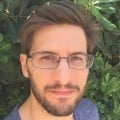Pedro Acosta has since his years in the minor categories been fingered as a racing predestined, seasons that would earn him a Moto3 title at age 17 and later the Moto2 title. He landed in MotoGP in 2024 and immediately proved that he is not just another rookie. "It's Incredible, hard to understand, Magical," Hervè Poncharal, team principal of the GasGas Factory Tech3 team in which the Spaniard rides, will later say. With four races to go in the championship, Pedro Acosta, who is already blowing up on social media, has already collected two podiums, a 3rd place in Portimao and a 2nd in Austin, up to the latest 2nd place in the Jerez sprint. Results that demonstrate the incredible competitiveness of the Acosta-KTM pairing and that leave fans dreaming about the still untapped potential of the champion from Mazarron.
And if one Marc Marquez spoke, in the first races and with good reason, of intemperance and inexperience typical of a rookie, a perhaps clearer picture of the motivations behind the Spaniard's competitiveness and speed can be given by his own technicians, who experience the magic from an inside-the-box vantage point.
"Our first impression in the box was the 'wow' factor, " comments his chief technician Paul Trevathan, " We looked at each other and were in disbelief. From his body position to the way he was exploiting the bike, he looked like a rider who had known the bike for six months already. He was really interested in the technical side of all the elements, much more than you would expect from a rookie first approach, his willingness to understand how all the elements of the bike work is incredible."
The first contact with MotoGP for Acosta revolved around issues of ergonomics.
" He is quite finicky, " the chief technician continues, " in the sense that with his riding style he moves around a lot on the bike, so for him it is crucial that every control is in its optimal position so that it can become natural to use them. The hardest part for us was not helping him with his position on the bike as much as adapting the bike to his freedom of movement. I don't think they have polished a real style yet, because every time he gets on the bike he does something better than the time before. I haven't caught a glimpse of his limits yet."
After all, Pedro Acosta himself has never made it a secret that he has not yet worked too much on the bike, his intention is first to explore the limit of his own riding style: "Since Valencia we have only changed the handlebar levers and their position, as well as that of the clutch and brakes. I 'm still not 100 percent, I'm still not giving it my all," he will later tell reporters.
"Riding a MotoGP bike requires certain things ," Trevathan then continued, " you have to give everything to stop the bike so it also takes a lot of knowledge of the bike before you understand how to be able to stop it, and he in terms of speed and braking performance is already very competitive. He's already able to adapt to the bike, to understand how not to lose reference points on the track, and that's maybe the secret that makes the difference between being great or just good. At the rate he is growing and not being able to see his limits yet, we didn't touch the bike too much. We took a look at the general level in Valencia and for him we started from a base with average values, trying to always keep a neutral base in the package. This is helping him understand the limits better."
Of the same opinion is Alessio Capuano, strategy engineer at GasGas, who goes into more detail about what can be observed from the Spaniard's data.
"What immediately jumps out at you is the difference, compared to the other riders, in the variations on the chronometric references. He methodically follows every single piece of advice we can give him, and this is reflected in the data. Already in the winter tests he had amazed us in his ability to understand the electronics right from the start, which is perhaps the most difficult aspect when you get on a MotoGP bike for the first time."
In sum, then, Poncharal's statement when he called the young Spaniard "a sponge" has a kernel of truth. Acosta has the talent, yes, but his results are also the result of methodical work and understanding of the medium in order to fully probe its limits, which have not yet been reached.
"The data probably teaches us more than it teaches him ," Paul Trevathan continues in his remarks, " and we use it by comparing it to other riders like everyone else, to understand what makes him so fast. And it's hard to hit a specific detail, because every time he jumps on the bike he does something different. By that I don't mean that there aren't riders who are just as good on the brakes, but in the end it also matters to know when to do it and how to do it, and in that Pedro has something magical in a way, working with him and seeing what he's doing is like witnessing one of the mysteries of the universe, he's one of those guys who comes maybe every 10-15 years who somehow resets the overall level, the impression is that the sky is the limit for him."
Automatic Translation by DeepL









